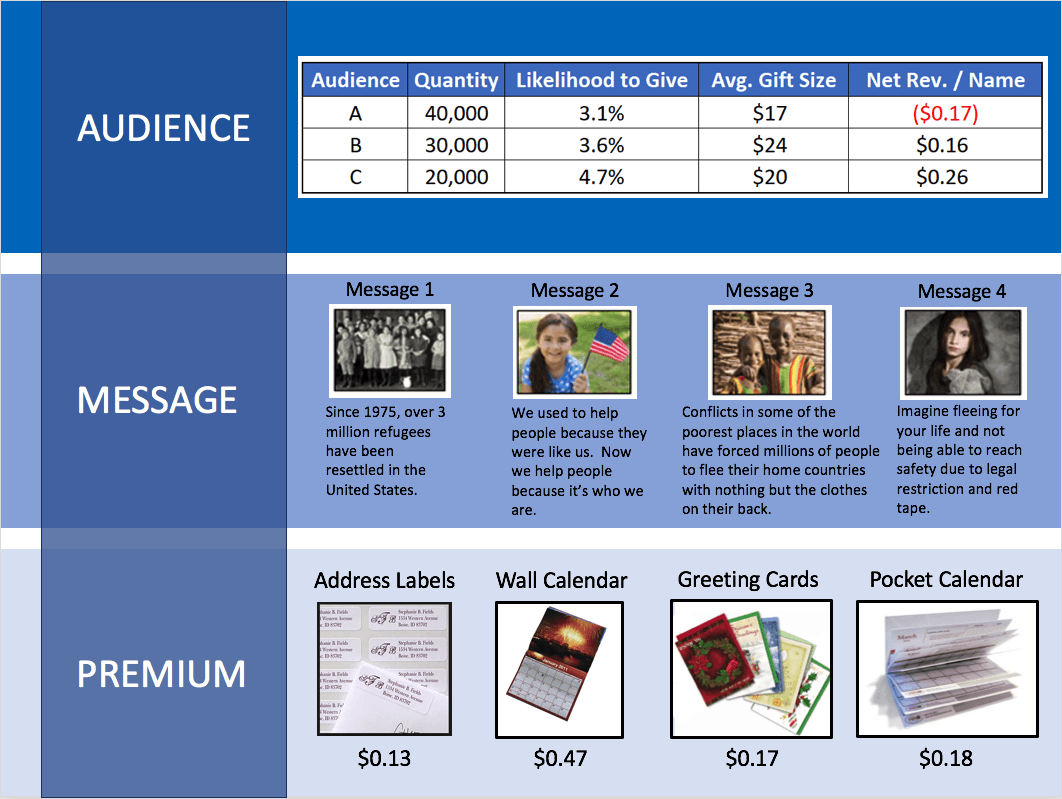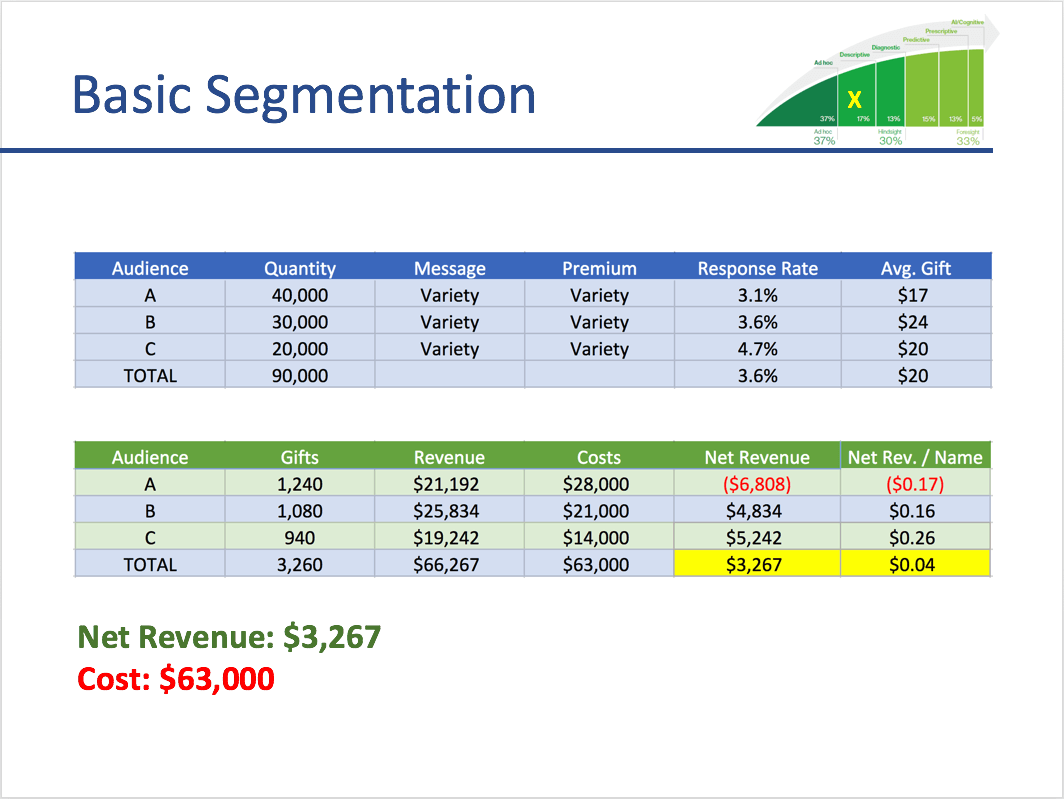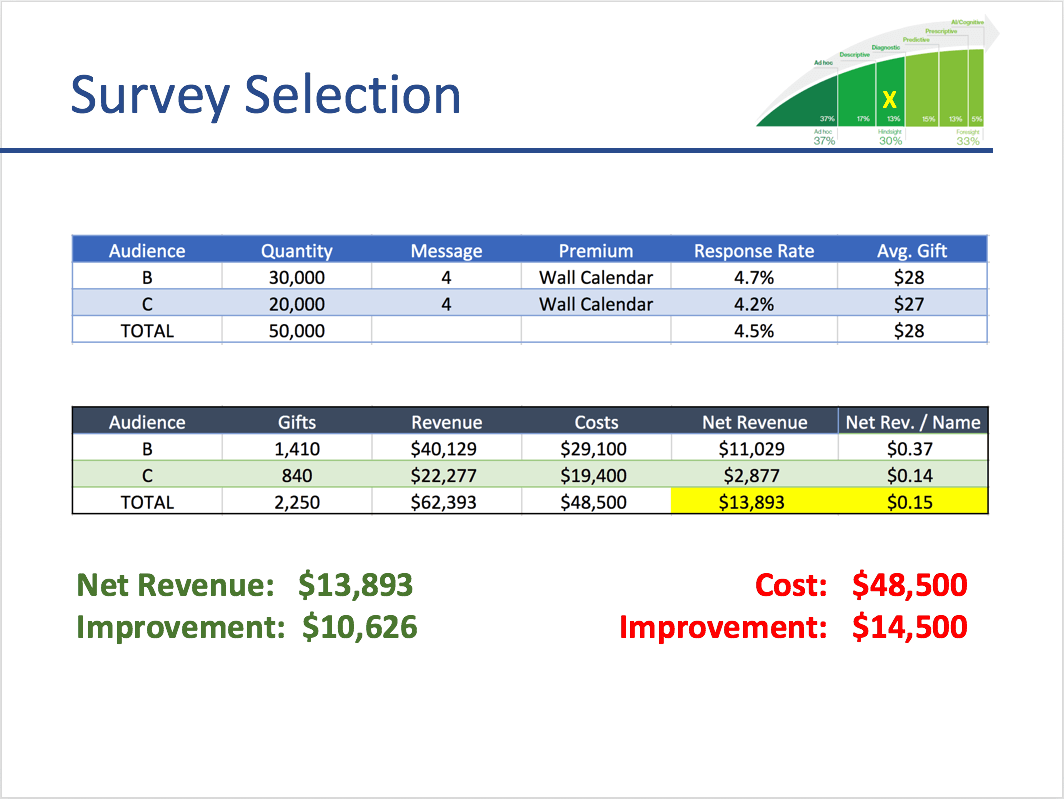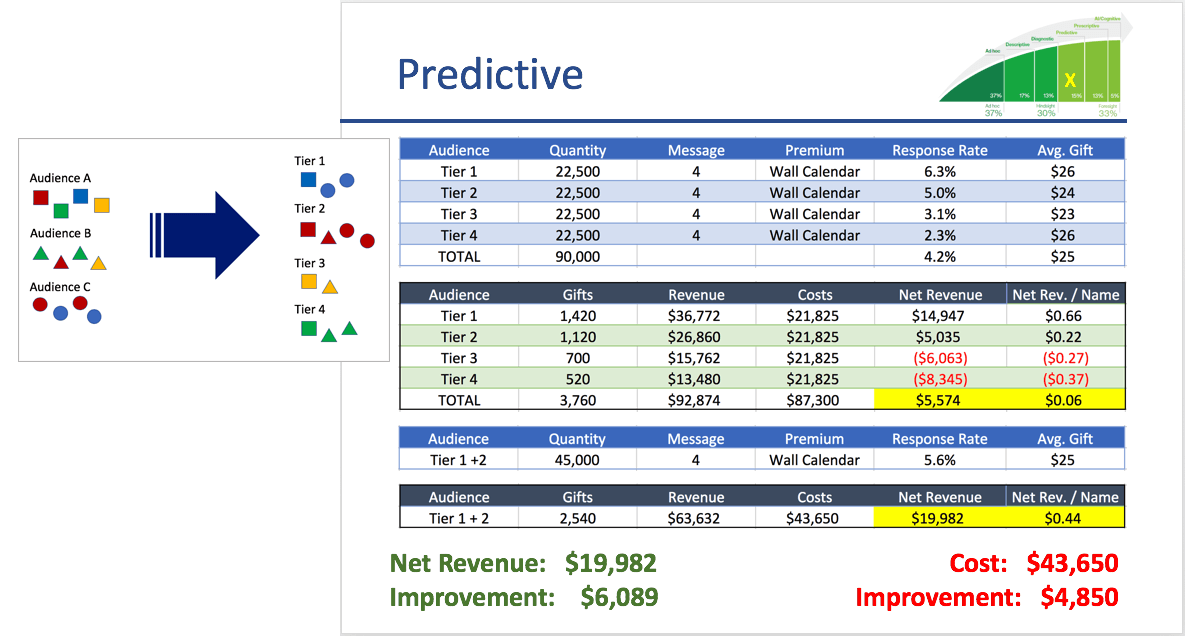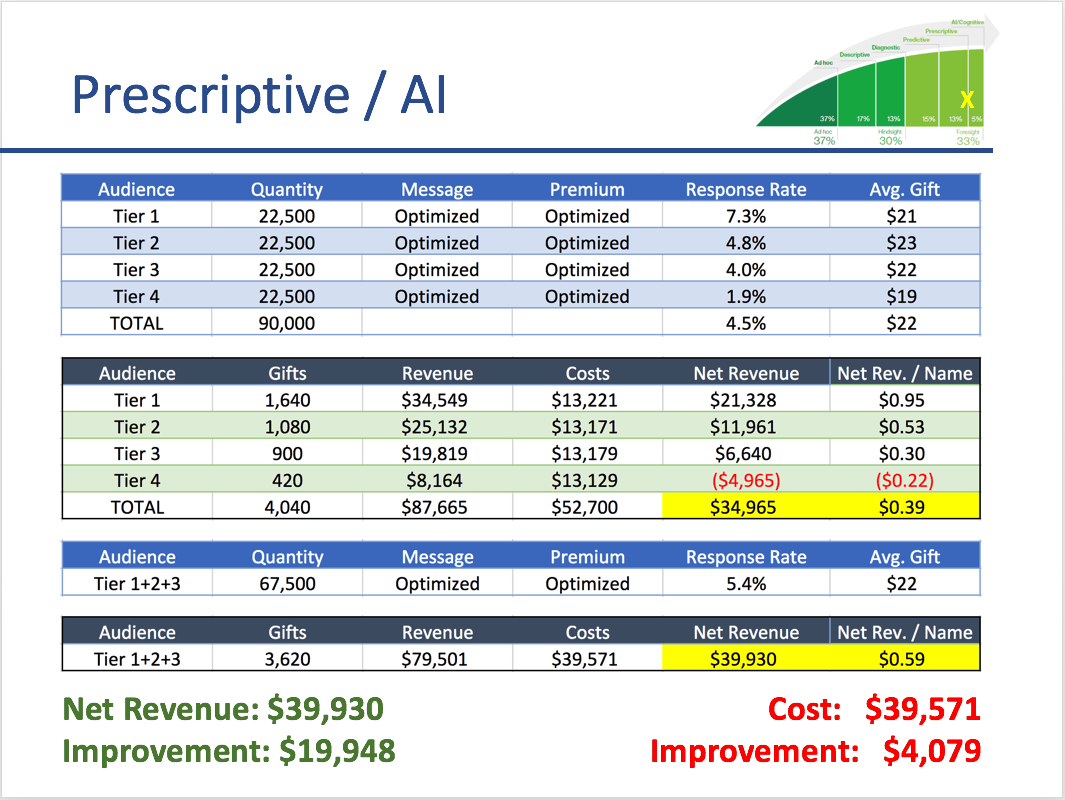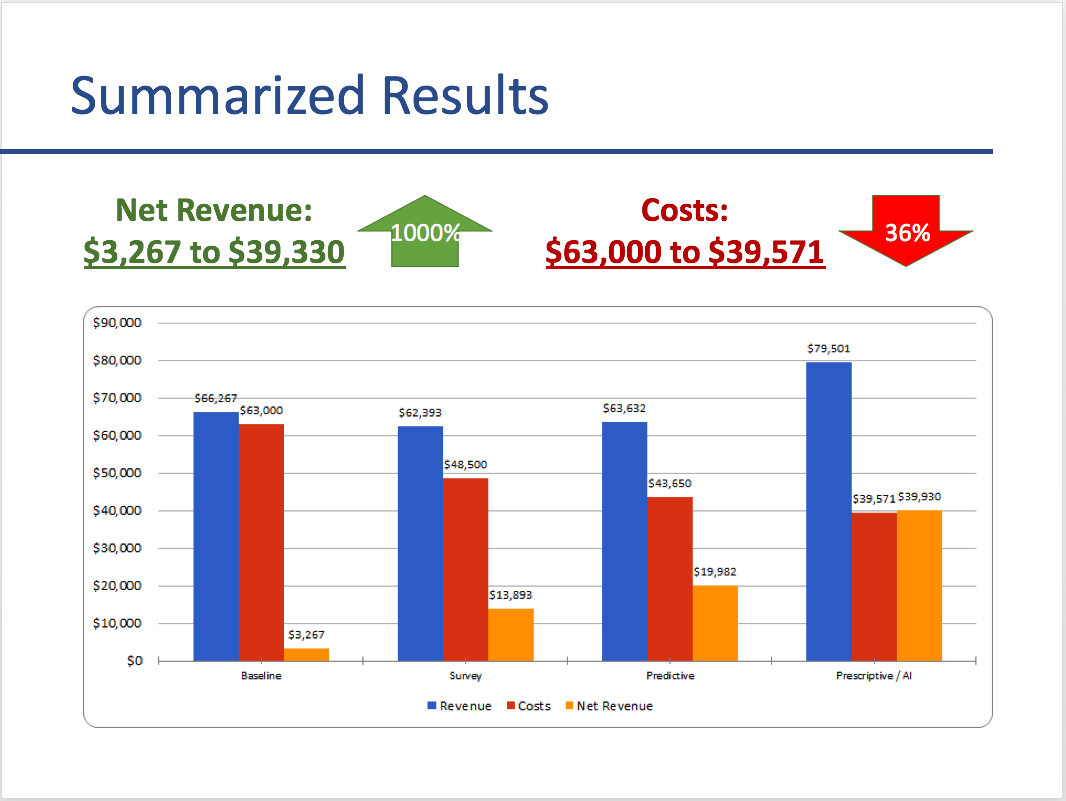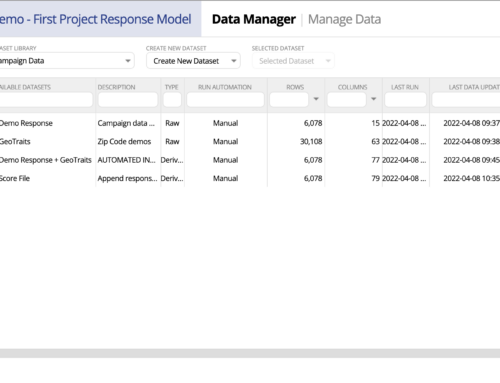A step-by-step example illustrating the revenue impacts of applying advanced analytics to marketing campaigns
Can advanced analytics outperform experience when it comes to marketing campaigns? We created a hypothetical campaign to simulate how progressive stages of advanced analytics can impact marketing campaign ROI.
Stage 1: Basic Segmentation // Descriptive Analytics (What happened?)
Depending on your campaign goals, the criteria that you use for segmentation can take many different forms. As a starting point, most marketers will look to historical data, such as likelihood to give/purchase, average gift size/purchase amount, and net revenue per donor/customer, then pair that data with other campaign variables such as message and premium.
Without getting much more sophisticated, a campaign manager may elect to test a variety of messages and premiums across Audiences A, B, and C, and by doing so, they might see results like this:
While the simulated campaign resulted in a positive net revenue, the gains are somewhat insignificant when evaluated alongside the campaign investment, especially when you consider other factors that may not be calculated into costs, such as time and overhead.
Stage 2: Diagnostic Analytics (Why did it happen?)
Now let’s get a bit more targeted with our segmentation by focusing on the audiences with higher response rates. And, for the purposes of this example, we’ll select Message 4 and the Wall Calendar premium to simulate a decision based on intuition.
We can start to see how very simple segmentation methods can have a significant impact on net revenue, with particular attention paid to cost savings. So, let’s take it a step further…
Stage 3: Predictive Segmentation (What will happen?)
Advanced analytics adds a layer of intelligence to segmentation that allow us to better interpret our historical data by applying algorithms to determine which data points are most predictive. We can then start to re-categorize our audience based on these models. The audience doesn’t change, but the segments do.
When we leverage advanced analytics to dig further into the data, we’re able to identify the data that are the strongest contributors to net revenue, then segment based on those criteria. The results demonstrate an even greater impact on net revenue.
Stage 4: Prescriptive / Artificial Intelligence (What should I do?)
The ultimate level of sophistication when it comes to campaign segmentation is built off of a predictive foundation, but goes a step further in building all models so you can right-size the campaign to pair the right offer with the right person at the right time—a marketer’s dream! The results speak for themselves:
Looking back across all approaches, as applied to this sample campaign, we see the very real impact that advanced analytics can have on campaign ROI.
